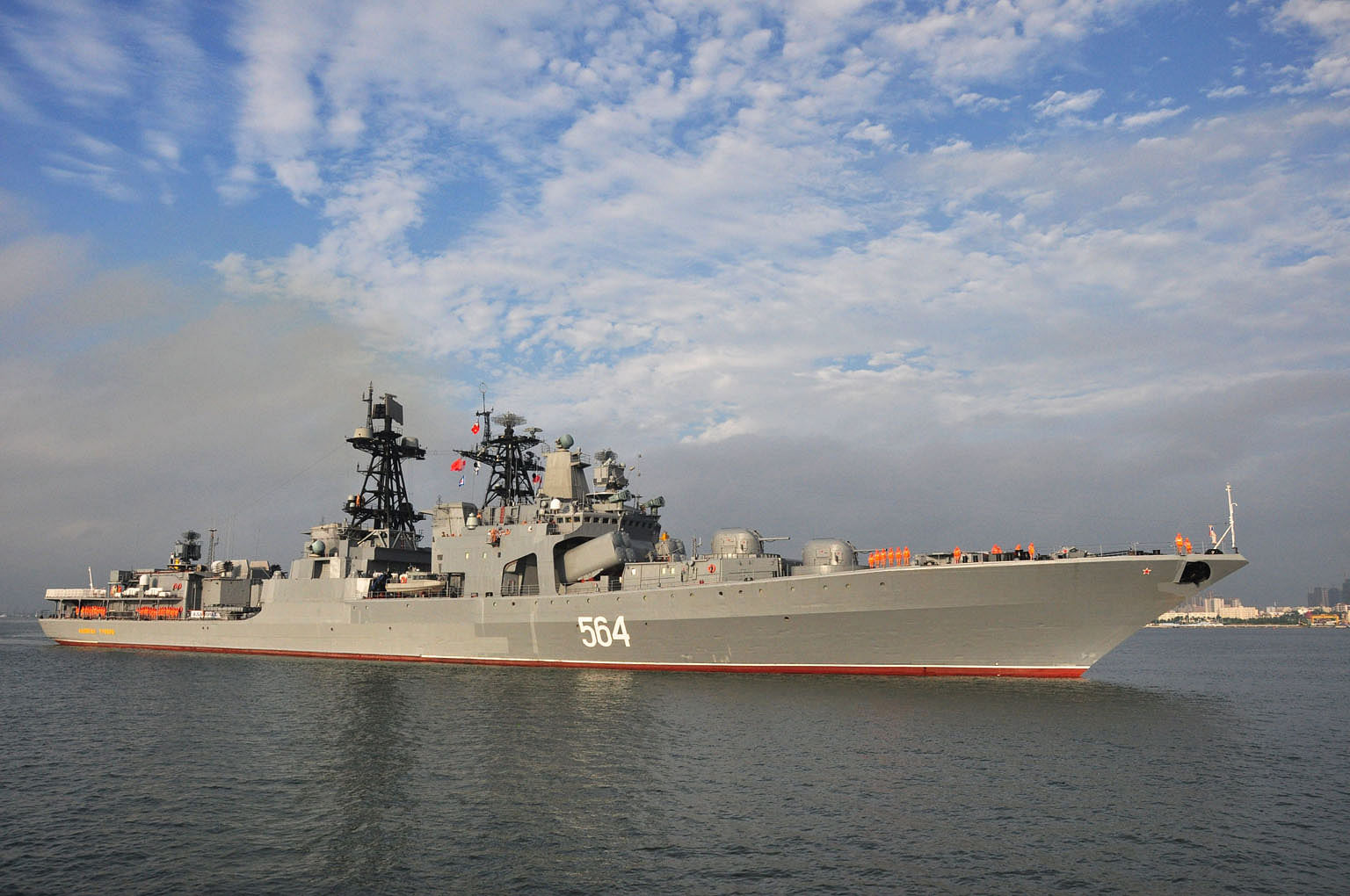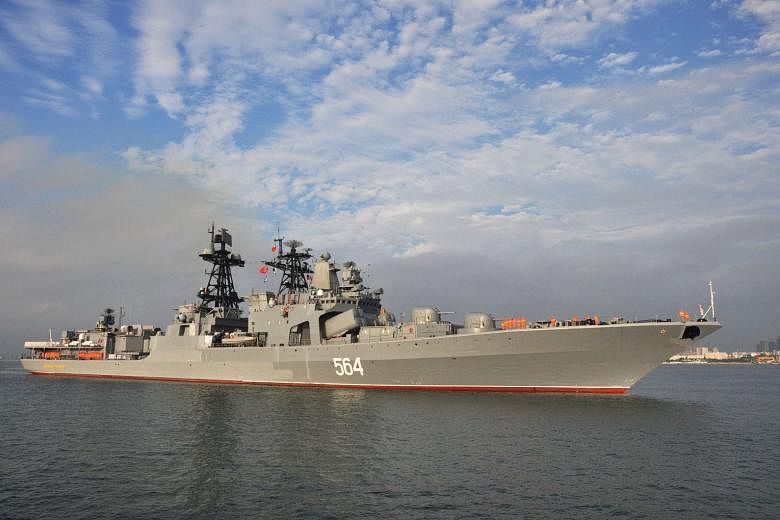The United States elects a new president on Nov 8. Four scholars from Stanford University's Shorenstein Asia-Pacific Research Centre look at policy challenges in Asia that the new US administration will face, and offer some possible directions for US-Asia relations.
US-China: No radical shift expected
Thomas Fingar, Shorenstein distinguished fellow and former chairman of the US National Intelligence Council.
Managing the United States' relationship with China must be at the top of the new administration's foreign policy agenda because the relationship is consequential for the region, the world and American interests. Successful management of bilateral issues and perceptions is increasingly difficult and increasingly important.
Alarmist predictions about China's rise and America's decline mischaracterise and overstate tensions in the relationship.
There is little likelihood that the next US administration will depart from the "hedged engagement" policies pursued by the last eight US administrations.
America's domestic problems cannot be solved by blaming China or any other country. Indeed, they can best be addressed through policies that have contributed to peace, stability and prosperity.

Strains in US-China relations require attention, not radical shifts in policy. China is not an enemy and the United States does not wish to make it one.
Nor will or should the next administration resist changes to the status quo if change can better the rules-based international order that has served both countries well.
Washington's objective will be to improve the liberal international system, not to contain or constrain China's role in that system.
The United States and China have too much at stake to allow relations to become dangerously adversarial, although that is unlikely to happen.
But this is not a reason to be sanguine. In the years ahead, managing the relationship will be difficult because key pillars of the relationship are changing.
For decades, the strongest source of support for stability in US-China relations has been the US business community, but Chinese actions have alienated this key group and it is now more likely to press for changes than for stability.
A second change is occurring in China. As growth slows, Chinese citizens are pressing their government to make additional reforms and to respond to perceived challenges to China's sovereignty.
The next US administration is more likely to continue and adapt current policies towards China, and Asia more broadly, than to pursue a significantly different approach.
Those hoping for or fearing radical changes in US policy will be disappointed.
US-Japan: FTA on the cards?
Daniel Sneider, Associate director for research and a former foreign correspondent.
US-Japan relations have enjoyed a remarkable period of strengthened ties in the last few years. The passage of new Japanese security legislation has opened the door to closer defence cooperation, including beyond Japan's borders.
The Japan-Korea comfort women agreement, negotiated with American backing, has led to growing levels of tripartite cooperation between the US and its two principal North-east Asian allies. And the negotiation of a bilateral agreement within the Trans-Pacific Partnership (TPP) talks brought trade and investment policy into close alignment.
The US election, however, brings some clouds to this otherwise sunny horizon. Three consecutive terms by the same party would certainly preserve the momentum behind the "pivot to Asia" strategy of the last few years. Still, there are some dangers ahead. If Japan moves ahead to make a peace treaty with Russia, resolving the territorial issue and opening a flow of Japanese investment into Russia, that could be a source of tension. The new administration may also want to mend fences early with China, seeking cooperation on North Korea and avoiding tensions in South-east Asia.
The big challenge, however, will be guiding the TPP through Congress. While there is a strong sentiment within policy circles in favour of rescuing the deal, perhaps through some kind of adjustment of the agreement, insiders believe that is highly unlikely. The Sanders-Warren wing of the Democratic Party has been greatly strengthened by this election and it will be looking for any sign of retreat on the TPP. Mrs Hillary Clinton has an ambitious agenda of domestic policy initiatives on which she will need their support.
One idea now circulating quietly in policy circles is to "save" the TPP by separating off a bilateral Japan-US free trade agreement. Tokyo is said to be opposed to this but Washington may put pressure on for this option, leaving the door open to a full TPP down the road.
North Korea: Unfinished business
Kathleen Stephens, William J. Perry distinguished fellow and former US ambassador to the Republic of Korea.
North Korea under Kim Jong Un has accelerated its campaign to establish itself as a nuclear weapons state. Two nuclear tests and multiple missile firings have occurred this year. More tests, or other provocations, may well be attempted before or shortly after the new American president is inaugurated in January. The risk of conflict, whether through miscalculation or misunderstanding, is serious. The outgoing and incoming administrations must coordinate on policy and messaging about North Korea with each other and with Asian allies and partners.
North Korea policy challenges will be inherited by the next president as "unfinished business", unresolved despite a range of approaches spanning previous Republican and Democratic administrations.
The first months in the new US president's term may create a small window to explore potential new openings. The new president should demonstrate at the outset that North Korea is high on the new administration's priority list, with early substantive exchanges with allies and key partners like China to affirm US commitment to the defence of its allies, a denuclearised Korean Peninsula and the vision agreed to at the Six-Party Talks in the September 2005 Joint Statement of Principles.
Early messaging to Pyongyang is also key - clearly communicating the consequences of further testing or provocations, but at the same time signalling the readiness of the new administration to explore diplomatic approaches. The appointment of a senior envoy, close to the president, could underscore the administration's seriousness as well as help manage the difficult policy and political process in Washington itself.
The challenges posed by North Korea have grown greater, but there are few untried options acceptable to any new administration in Washington. Nonetheless, the new administration must explore what is possible diplomatically and take further steps to defend and deter as necessary.
South China Sea: Can this flashpoint become a turning point?
Donald K. Emmerson, Senior fellow emeritus and director of the South-east Asia Programme.
The South China Sea is currently a flashpoint, prospectively a turning point and actually the chief challenge to American policy in South-east Asia. The risk of China-US escalation makes it a flashpoint.
Future historians may call it a turning point if - a big if - China's campaign for primacy in it and over it succeeds and heralds (a) an eventual incorporation of some portion of South-east Asia into a Chinese sphere of influence, and (b) a corresponding marginalisation of American power in the region.
A new US administration will be inaugurated in January. Unless it wishes to adapt to such outcomes, it should:
- Renew its predecessor's refusal to endorse any claim to sovereignty over all, most or some of the South China Sea and/or its land features made by any of the six contending parties - Brunei, China, Malaysia, the Philippines, Taiwan, Vietnam - pending the validation of such a claim under international law.
- Strongly encourage all countries, including the contenders, to endorse and implement the authoritative interpretation of the UN Convention on the Law of the Sea (Unclos), issued on July 12 by an Unclos-authorised court. Washington should also emphasise that it, too, will abide by the judgment, and will strive to ensure American ratification of Unclos.
- Maintain its commitment to engage in publicly acknowledged freedom of navigation operations (Fonops) in the SouthChina Sea on a regular basis. Previous such Fonops were conducted in October 2015 by the USS Lassen, in January 2016 by the USS Wilbur, in May 2016 by the USS Lawrence, and in October 2016 by the USS Decatur. The increasingly lengthy intervals between these trips, despite a defence official's promise to conduct them twice every quarter, have encouraged doubts about precisely the commitment to freedom of navigation that they were meant to convey.
- Announce what has hitherto been largely implicit: The Fonops are not being done merely to brandish American naval prowess. Their purpose is to affirm a core geopolitical position, namely, that no single country should exercise exclusive or exclusionary control over the South China Sea.
- Brainstorm with Asian-Pacific and European counterparts a range of ways of multilateralising the South China Sea as a shared heritage of, and a resource for, its claimants and users alike.
These articles were first published on the website of the Stanford University's Shorenstein Asia-Pacific Research Centre. http://aparc.fsi.stanford.edu



